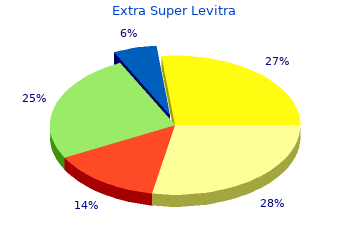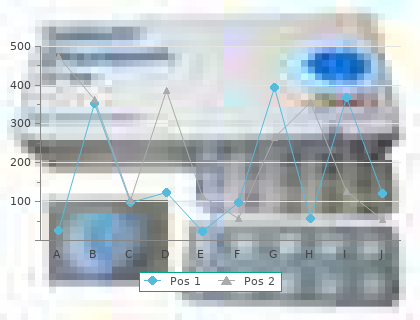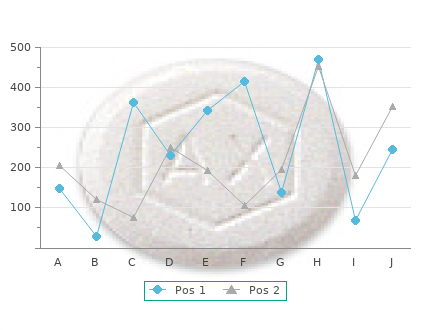Extra Super Levitra
By L. Thordir. Concordia College, Moorhead Minnesota.
The site of the bite should be washed with soapy water and the rabies immunoglobulin should be infltrated round the site of the bite and also given intramuscularly cheap extra super levitra 100 mg mastercard. Dose Intramuscular injecton Adult and Child- Following birth of a rhesus- positve infant in rhesus-negatve mother: 250 µg immediately or within 72 h. Following any potentally sensitzing episode like amniocentesis, stll birth, up to 20 weeks gestaton: 250 µg per episode, afer 20 weeks: 500 µg immediately or within 72 h. Following Rho (D) incompatble blood transfusion: 10 to 20 µg/ml transfused rhesus-positve blood. Precautons See introductory notes; cauton in rhesus- positve patents for treatment of blood disorders; cauton in rhesus-negatve patents with ant-D antbodies in their serum; patents should be observed for 20 min afer injecton. Rubella vaccine may be administered in the postpartum period at the same tme as ant-D immunoglobulin injecton, but only using separate syringes and separate contralateral sites. If blood is transfused, the antbody response to the vaccine may be inhibited and a test for antbodies should be performed afer 8 weeks and the subject revaccinated if necessary. Adverse Efects See introductory notes; local pain and tenderness, fever, headache; cutaneous reacton; tachycardia, hypotension. For freeze dried preparaton: Store protected from light in a colourless glass cotainer at a temperature not exceeding 30⁰C. Anttetanus Immunoglobulin (Human)* Pregnancy Category-C Indicatons Passive immunisaton against tetanus as part of the management of tetanus-prone wounds. Dose Intramuscular injecton Adult and Child-250 units, increased to 500 units if wound older than 12 h or there is risk of heavy contaminaton or if patent weighs more than 90 kg. Second dose of 250 µg given afer 3 to 4 weeks if patent is immunosuppressed or if actve immunisaton with tetanus vaccine contraindicated. If schedule requires tetanus vaccine and anttetanus immunoglobulin to be administered at the same tme, they should be administered using separate syringes and separate sites. Diphtheria Anttoxin* Indicatons Passive immunisaton in suspected cases of diphtheria. Dose Intramuscular injecton Adult and Child- 10,000 to 30,000 units in mild to moderate cases; 40,000 to 1,00,000 units in severe cases. Both intramuscular and intravenous injecton For doses more than 40,000 units, a porton should be given by intramuscular injecton followed by the bulk of the dose intravenously afer an interval of 0. Precautons Inital test dose to exclude hypersensitvity; observaton required afer full dose [epinephrine (adrenaline) and resuscitaton facilites should be available]; history of asthma. Adverse Efects Anaphylaxis with urtcaria, hypotension, dyspnoea and shock; serum sickness up to 12 days afer injecton; fever, respiratory distress. Rabies Immunoglobulin* Pregnancy Category-C Indicatons Passive immunisaton either post-exposure or in suspected exposure to rabies in high- risk countries in unimmunised individuals (in conjuncton with rabies vaccine). Dose Intramuscular injecton and wound infltraton Adult and Child- 20 units/kg (half by intramuscular injecton and half by wound infltraton). Contraindicatons See introductory notes; avoid repeat doses afer vaccine treatment initated; intravenous administraton. If schedule requires rabies vaccine and rabies immunoglobulin to be administered at the same time, they should be administered using separate syringes and separate sites. Adverse Efects See introductory notes; soreness at injecton site; fever; chest pain; tremor; dyspnoea. Local efects include pain, swelling, bruising and tender enlargement of regional lymph nodes. Spontaneous systemic bleeding, coagulopathy, adult respiratory distress syndrome and acute renal failure may occur. Snake antvenom sera are the only specifc treatment available but they can produce severe adverse reactons. They are generally only used if there is a clear indicaton of systemic involvement or severe local involvement or, if supplies are not limited, in patents at high risk of systemic or severe local involvement. Spider bites may cause either necrotc or neurotoxic syndromes depending on the species involved. Supportve and symptomatc treatment is required and in the case of necrotc syndrome, surgical repair may be necessary. Spider antvenom sera, suitable for the species involved, may prevent symptoms if administered as soon as possible afer envenomaton. Dose 60-100 ml in 5% dextrose or normal saline intravenously over one hour; start at 1 ml of diluted soluton per minute initally, watch- ing for reacton. Skin sensitvity test is not recommended; In hemotoxic snake bites, may repeat a second dose at 6 h. Precautons Resuscitaton facilites should be immediately available; anthistamine and treatment for anaphylactc shock should be kept ready. Adverse Efects Serum sickness; anaphylaxis with hypotension, dyspnoea, urtcaria and shock.


Strategic planning for properly placing and harmonizing testing platforms should be carried out to ensure appropriate use and cost–effectiveness discount extra super levitra 100 mg without prescription. The guidelines should include training requirements for specifc tests and the process for certifcation and recertifcation. All health workers assigned to perform point- of-care tests must be trained and profcient on the testing procedure, specimen collection and quality assurance before implementing these services. The quality management system should: be implemented within the laboratory network and all remote testing sites; be incorporated into the routine testing procedures and monitored; ensure that testing sites undertake quality control, as appropriate; ensure that testing sites are enrolled in an external quality assessment scheme (profciency testing programme); ensure the use of standard operating procedures for all processes, including specimen collection and processing, test methods, interpreting results and reporting; ensure the use of standardized logbooks or electronic data management and reporting, including identifying errors and potential misclassifcation; and ensure that equipment and facilities are maintained, both preventive and corrective. This can be achieved only if the procurement and supply management system is strengthened at all levels of the health system. This requires a more effcient and dynamic supply management system to prevent waste and shortages. Since a single health facility may not carry out the dispensing of all needed pharmaceuticals, in some settings clients would need to be able to access services through a referral system. It includes a variety of activities at all levels of the health care delivery system: from the national programme level down to where medicines are dispensed and diagnostics are used. The main activities include managing the information system, ensuring timely information flow between stakeholders at different levels and securing financial and other resources, including the medicines and diagnostics needed for the programme. The following provides broad guidance on key activities at each stages of the supply management cycle. Countries may consider removing less preferred products and aligning paediatric formulations with those of adults, where possible. Health workers need to be trained at different levels in managing pharmaceuticals and diagnostics, including forecasting, procurement and distribution and ensuring adequate supervision throughout the supply system. Procurement should be based on appropriate selection of products and need-based forecasting, considering consumption, expanding services, phasing in and phasing out formulations and implementing new recommendations. Transparent procedures should be adopted to achieve best-value procurement and a quality assurance system implemented to procure, store and distribute high-quality pharmaceuticals, diagnostics and other health products (124,126). Product integrity and quality need to be maintained during storage and distribution (125,132), and waste from spoilage and expired products should be minimized. Integrated supply systems should be promoted when planning for decentralization, building on what exists and strengthening capacity where required. Facilities should have adequate storage space, trained personnel and the tools to manage supplies effectively. The number of storage levels should be rationalized to reduce the supply pipeline. Accurate inventory records should be maintained and a system created to track products that enter and leave the supply system. A routine consumption-based reordering cycle at service delivery sites should be established. Monitoring procurement and supply management through the effective use of early warning indicators prevents stock-outs and overstocks leading to expiry (126). National stakeholders face several important choices on how to optimally translate these recommendations into national practice. For example, although evidence of clinical efficacy supports the uptake of interventions, issues such as cost and cost– effectiveness, ethical and human rights considerations, the perceptions of various stakeholders and the legal and regulatory environment must also be taken into account (1). First, convening a broad, inclusive and transparent consultative process can help to define what programme changes are relevant and necessary, such as revising national protocols, guidelines and regulations. Second, in parallel, it is necessary to secure the financial resources and political support required to implement the proposed changes. Third, systems are required to ensure broad accountability for implementation from all partners at all levels and adequately document performance to inform programming decisions and maintain political support. Lastly, implementation and operations research should be supported so that innovative approaches can be assessed and taken to scale. Human rights and ethical principles should guide the revision of national treatment policies to ensure that they are equitable and meet the specific needs of all beneficiaries. Although national programme managers should oversee the decision-making process, it should also be broadly representative. The composition of the working group may vary over time and depend on the specific recommendations under discussion. In some countries, these data may be available from regular monitoring and evaluation activities or from recent programme assessments. Quantitative and qualitative data should, whenever possible, be disaggregated by gender, age, subnational administrative categories (such as regions and districts) and other relevant stratifications, including key populations, to ensure that new policies address inequities in access and increase the coverage of interventions. The consolidation of health information systems, including patient record registries, into electronic databases is critical to facilitate the management of increasing amounts of data and improve their robustness and availability for programme decision-making (see section 11. Data on adherence, retention and viral load suppression are key to assess the quality of the services provided. Relevance: Do stakeholders affected by these decisions agree that the rationale rests on relevant reasons, principles and evidence? Revisability and appeals: Can decisions be revised and/or appealed in light of new evidence and arguments? Enforcement: Are all stakeholders aware of the means to ensure that these conditions (publicity, relevance and revisability) are met?


The covering letter should be duly signed and stamped by the Authorised Signatory cheap extra super levitra 100 mg otc, indicating name and Designation of the Authorised Signatory. A copy of Valid Drug Manufacturing Licence for the Drug to be manufactured, issued by the Drug Licensing Authority wherein the imported drug will be used. A copy of Master Formula Record of the product to be manufactured Signed and Stamped by the Authorised Signatory of the Firm. A copy of Certificate of Analysis of the drug to be imported, issued by the manufacturer. Brief Manufacturing Process including Flowchart wherein the imported product will be used. For Subsequent permission, Reconciliation data of previously permitted quantity in addition to above details. I state that that consignment document like Certificate of Analysis, Bill of Entry, invoice etc. That the bags/containers carrying (Name of the drug) along with other requirements of labelling and packaging also mentions –―Not For Medicinal Use‖ or (―for use as pharma aid‖). That the bags/containers of the said drug along with other requirements of labelling and packaging also mentions ―Not For Medicinal Use‖. That the data of my previous transaction is annexed with this undertaking (Optional in cases of subsequent transaction). It may be advised that a period of two months before the actual import will be effective for smooth clearance of consignment. For review, correction & approval of checklist and draft - Should be done by Technical Head of the Department. Other relevant documents as prescribed in note 1 of Yes/No Form 27C Opinion: All the relevant documents submitted along with the forwarding letter of S. Any action for contravention of section 10 of the Drugs and Cosmetics Act is resorted to by advising the Commissioner of Customs to take action under section 11 of Drugs & Cosmetics Act, read with relevant provisions of customs Act 1962. All the port offices are headed by Assistant Drugs Controller (India) and assisted by Technical Officers/Drugs Inspectors along with some ministerial staff members. Requirements and check list for import of drugs (The documents required to be submitted by the importer and exporter should be displayed in the official notice board for perusal of the applicants and common public. No registration certificate is required for non-critical in- vitro diagnostic kits and reagents (Rule 24(2)) and inactive bulk substances (Rule 24 A (8)) However Form 10 is required for non critical invitro diagnostic kits and reagents. A Registration Certificate (Form 41), unless, it is sooner suspended or cancelled, shall be valid for a period of three years from the date of issue: provided that if the application for a fresh Registration Certificate is made nine months before the expiry of the existing certificate, the current registration certificate shall be deemed to continue in force until orders are passed on the application. Small quantities of new drugs the import of which is otherwise prohibited under section 10 of the act may be imported by a Govt. Hospital or Autonomous Medical Institution for the treatment of patients under a license in form 11-A(Rule 33-A). Patent and proprietary medicines shall be imported only in containers intended for retail sale. No drug having the shelf life of less than 60% is allowed for the import: provided that in exceptional cases the licensing authority may, for the reasons to be recorded in writing, allow the import of any drug having lesser shelf life period, but before the date of expiry as declared on the container of the drug (Rule 31). No drug, the manufacture, sale or distribution of which is prohibited in the country of origin shall be allowed to be imported under the same name or under any other name (Rule 30 B). All the drugs imported in India are required to be stored at drug/product specific temperature conditions. All the drugs imported should comply to the standards as specified in the Second Schedule to the Act and Rules there under. All the drugs/formulations imported into the India shall fulfil the labelling requirements as prescribed in Drugs and Cosmetics Rules1945. Self Certified copy of Form10 or 10A and Registration Certificate (Form 41) as the case may be 2. Original license in Form 11/11-A to make the debit for the quantity imported under respective bill of entry. If goods are not directly supplied from the manufacturer then the port officer may verify the authenticity of goods at manufacturer‘s end through e-mail/fax or his authorized registered agent in India. After scrutiny of the aforesaid documents and making the necessary entry in the records/computer, the technical staff to put up the Bill of entry (B/E) to the port officer. The Port officer should examine B/E and should decide at this stage whether:- a) Labelling & marking need to be checked by the port officers and samples may be drawn (If the drug imported is in small container of 5 kg or less than the original container may be called for to check the markings/label) b) When required Samples to be sent for testing / analysis to the Government / Approved testing lab. However, the port officer may draw more samples depending on the previous test reports, number of consignments and the reputation of the manufacturer/ importer. There are no proper labels/markings or no markings on the containers or the markings are illegible.
9 of 10 - Review by L. Thordir
Votes: 43 votes
Total customer reviews: 43

